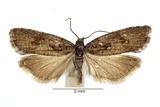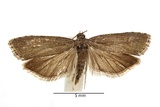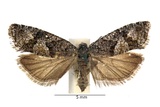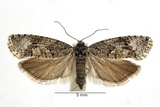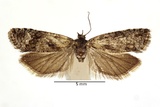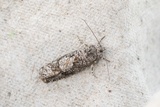Zeiraphera griseana (Hübner, 1799) Species
Last modified: Aug. 23, 2024, 4:34 p.m.
A very rare species in Belgium, mainly confined to the north of the country.
Details
- Classification
- Family: Tortricidae > Subfamily: Olethreutinae > Tribus: Eucosmini > Genus: Zeiraphera > Species: Zeiraphera griseana
- Vernacular names
- Grijze lariksbladroller (NL), Larch Tortrix (EN), Grauer Lärchenwickler (DE)
- Synonyms
- Zeiraphera diniana (Guenée, 1845)
- First mention in Belgium
- De Crombrugghe G. 1902b. Note sur quelques Microlépidoptères de la faune belge. — Annales de la Société Entomologique de Belgique 46: 481–483. On page 481.
- Status
-
Native
Distribution
Egg
The egg is ovoid and flat, yellowish, finely carved and knurled.
Caterpillar
Dark grey-green or grey body with black warts, the head and neck shield black, anal comb black.
Cocoon/pupa
Reddish-brown pupa, up to about 12 mm long.
Bionomics
Hibernates as an egg. The larva lives inside a tube-like spinning among the needles and pupates in a strong cocoon among plant debris or needles on the surface of soil.
Butterflies fly at dusk and dawn, as well as during the day and later come to light.
Flight periods
The adults can be seen from June towards late August.
Observed on
- Host plant (species):
- Larix decidua
- Host plant (genera):
- Picea, Pinus and Abies
The larva feeds mainly on Larix decidua, and exceptionally on Picea abies, Picea sitchensis, Abies alba, Pinus sylvestris and Pinus sp.
Habitat
It inhabits gardens, parks, larch plantations and open woodland with stands of larch.
